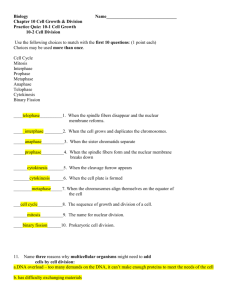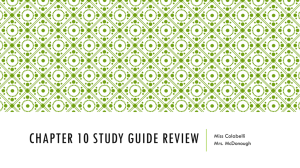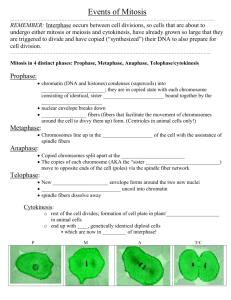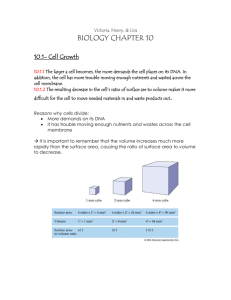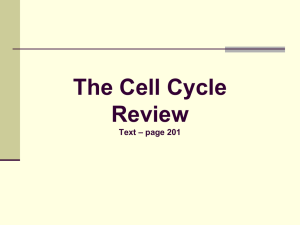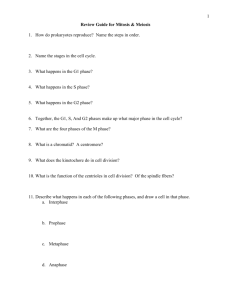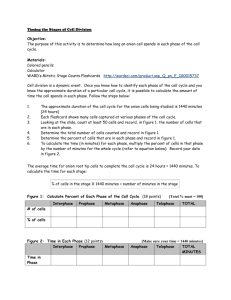What happens to the cell: What happens to the cell
advertisement
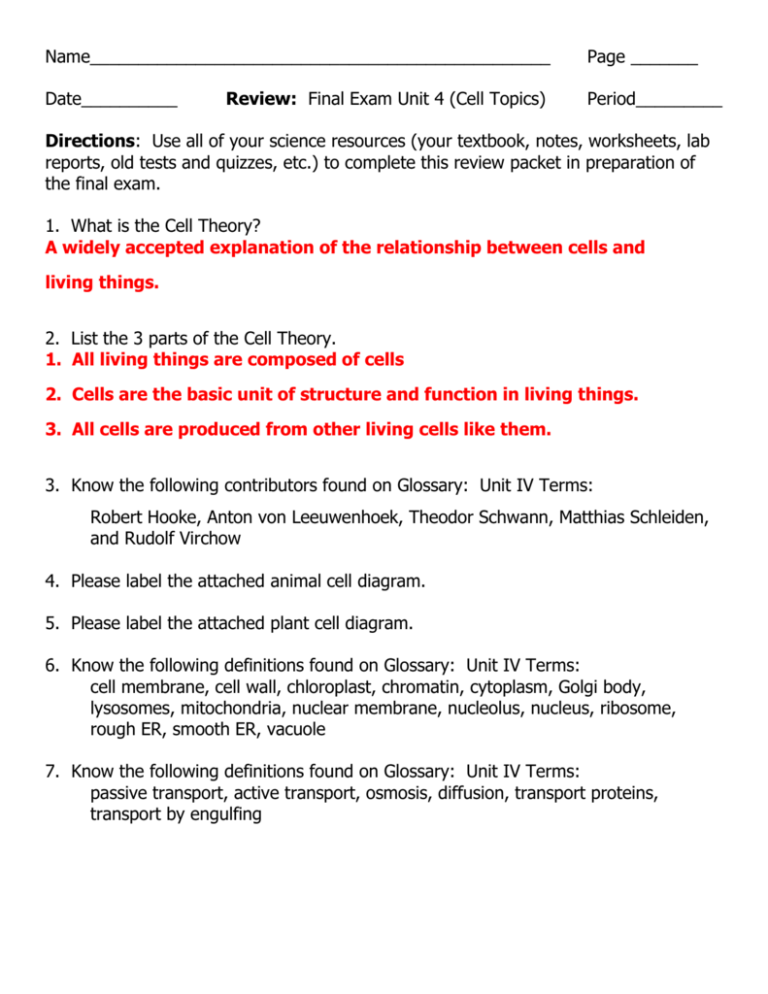
Name________________________________________________ Page _______ Date__________ Period_________ Review: Final Exam Unit 4 (Cell Topics) Directions: Use all of your science resources (your textbook, notes, worksheets, lab reports, old tests and quizzes, etc.) to complete this review packet in preparation of the final exam. 1. What is the Cell Theory? A widely accepted explanation of the relationship between cells and living things. 2. List the 3 parts of the Cell Theory. 1. All living things are composed of cells 2. Cells are the basic unit of structure and function in living things. 3. All cells are produced from other living cells like them. 3. Know the following contributors found on Glossary: Unit IV Terms: Robert Hooke, Anton von Leeuwenhoek, Theodor Schwann, Matthias Schleiden, and Rudolf Virchow 4. Please label the attached animal cell diagram. 5. Please label the attached plant cell diagram. 6. Know the following definitions found on Glossary: Unit IV Terms: cell membrane, cell wall, chloroplast, chromatin, cytoplasm, Golgi body, lysosomes, mitochondria, nuclear membrane, nucleolus, nucleus, ribosome, rough ER, smooth ER, vacuole 7. Know the following definitions found on Glossary: Unit IV Terms: passive transport, active transport, osmosis, diffusion, transport proteins, transport by engulfing 8. Using your knowledge of Osmosis, complete the problems below. Key **Note: the cell membrane is impermeable to the X particles. =the Environment =the cell x =particles =movement of water Situation 1 Situation 2 Environment: Hypotonic Environment: isotonic The Cell: Hypertonic The Cell: isotonic Water Movement: Into the cell Water Movement: What happens to the cell: Expands and possibly explode What happens to the cell: stays about the same size 9. What organelle is responsible for regulating the materials that move into and out of all cells? selectively-permeable cell membrane 10. Draw and briefly describe the forms of DNA during the Cell Cycle. chromatin chromosome chromatid -slightly coiled DNA -exists during Interphase, early Prophase, late Telophase - highly coiled DNA - exists during late Prophase Metaphse, early Anaphase -½ of a chromosome - exists during late Anaphase, early Telophase 11. Fill in the missing information about the Cell Cycle. I. Interphase Cell grows to its full size Chromatin doubles through DNA replication centrioles form and begin to move to opposite ends of the cell II. Mitosis a. Prophase Chromatin condenses, forming chromosomes The nuclear membrane breaks down Spindle fibers form b. Metaphase Spindle fibers attach to centromeres Chromosomes line up down the middle of the cell c. Anaphase Sister chromatids are pulled apart Some spindle fibers stretch the cell d. Telophase Nuclear membrane reforms Chromatids turn back into chromatin Cytokinesis begins III. Post-cytokinesis AKA Interphase A furrow develops during Telophase The cytoplasm completely divides, leaving 2 smaller daughter cells New cells immediately start Interphase again 12. What is the mnemonic device for the parts of the Cell Cycle? I prefer M&Ms and teriyaki chicken. 13. What are the levels of cellular organization in an organism? Cell Tissue Organ Organ system Organism Note: Although these are not the same plant and animal cell diagrams that you had in your study guide, you can use these diagrams to check your work.
